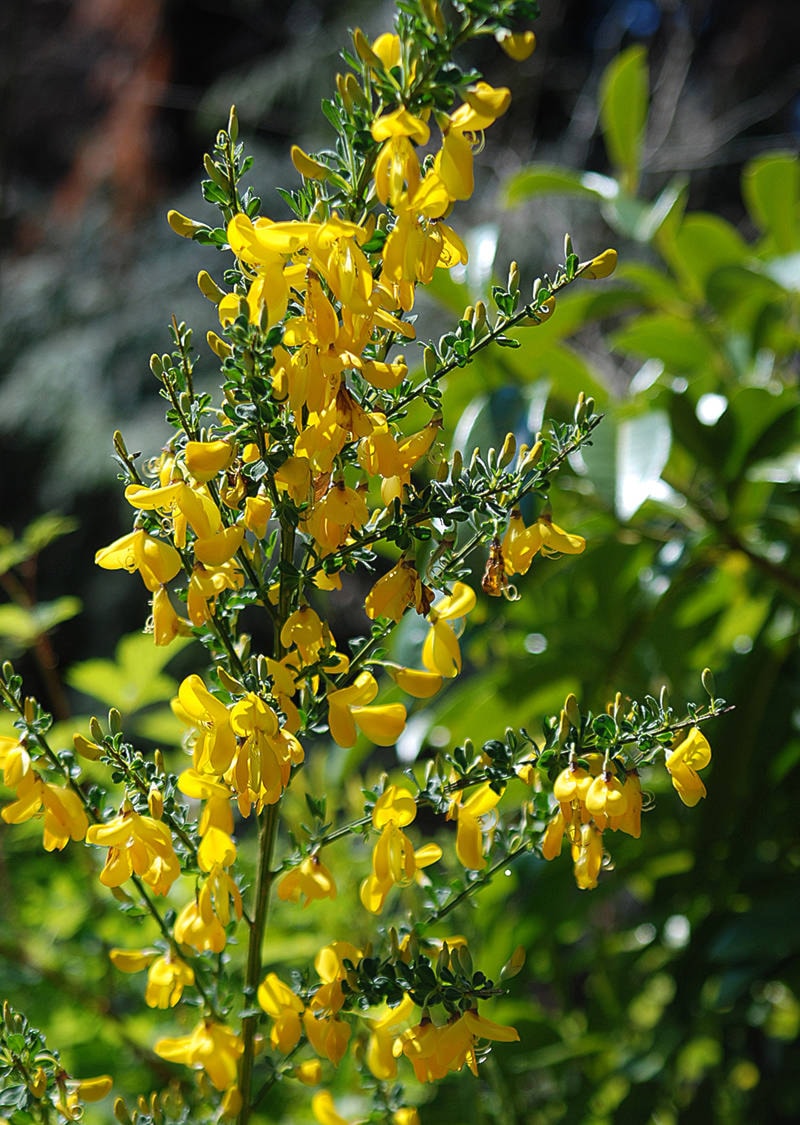This is the first in a series of education articles the City of Campbell River is releasing in an effort to counteract the damage done by invasive species.
May is Invasive Species Action Month, and a good time to tackle some of Campbell River’s most unwanted, especially Scotch broom, which is currently in bloom.
Bash broom with us! Upcoming volunteer opportunity
Following two May 12 broom bashing events, volunteers are invited to help BroomBusters, the Rotary Club and Wei Wai Kum First Nation on May 27 from 9 a.m. until noon. A communal lunch will follow cutting Scotch broom along the south side of Highway 19A between Dogwood Street and the entrance to Walmart.
“We’re pleased to be part of this collective effort to protect the environment that we all treasure,” said Chris Roberts, Chief of the Wei Wai Kum First Nation. “I’d particularly like to thank the volunteers who work so hard to organize these activities and to promote awareness of this important work.”
What’s the problem? Broom might be pretty, but… Well known in Scotland, evidence suggests broom was intentionally introduced on Vancouver Island because of its cultural significance and perceived beauty. It quickly grew into thick infestations that smother conifer seedlings and pose a high wildfire risk. When its yellow flowers bloom in spring, Scotch broom also triggers allergies.
“Invasive plant species have harmful impacts in our region, on our unique environment, to our economy and our people,” said the city’s environmental specialist Terri Martin. “In fact, around the world, invasive species are the second highest threat to biodiversity and a major cause of loss of habitable space.”
What’s been done so far? Greenways Land Trust has a long history of recruiting volunteers and school groups to remove broom in environmentally-sensitive areas and parks such as along Myrt Thompson Trail beside the Campbell River estuary and at Haig-Brown Kingfisher Creek. In recent years, BroomBusters and the Rotary Club have worked hard in parks and along road corridors to reduce broom’s stronghold. The city’s Parks Department supports these efforts by arranging for invasive plant pick-up and disposal at the landfill. In 2015, city council endorsed the City of Campbell River Invasive Plant Management and five-year Implementation Plan.
New this year – the Environmental Protection Bylaw. The city is in the final stages of amending its Environmental Protection Bylaw to regulate certain noxious weeds and invasive plants by restricting planting and requiring removal. With the province’s approval, the bylaw can be adopted by this summer – and Scotch broom is one of the plants that will be regulated.
“Including broom on private land in the bylaw supports and complements the significant volunteer broom removal efforts locally,” said Coun. Marlene Wright, who holds the environmental portfolio. “We felt that it was also important to lead by example, and council has approved $10,000 annually to help bolster broom removal efforts on public lands.”
Greenways Land Trust will track broom on public lands and work with BroomBusters to provide equipment, prioritize locations and monitor results. In addition to their regular Broom Bash along the Myrt Thompson Trail, broom plants will be targeted along Nunns Creek, portions of the Rotary Sea Walk, Haig-Brown Kingfisher Creek and at the Museum.
How to identify Scotch broom:
• Woody stems bloom with bright yellow, pea-like flowers in spring.
• Shrubs grow one to three metres high.
• Flat, hairy seedpods are initially green, turning brown or black with maturity.
What to do about broom on private property
In spring, broom requires a lot of energy to bloom. This is best time to cut it because it is less likely to re-sprout.
Dispose of cuttings with yard waste curbside collection or at the yard waste drop-off centre off Willis Road. If there are any visible seeds or seedpods, put the cuttings in garbage bags for disposal at the Campbell River Waste Management Centre. Landfill tipping fees are reduced as long as the broom plants are in a container or bags that distinguishes them from regular garbage.
Report large infestations of broom on private land to the city by emailing terri.martin@campbellriver.ca.
“There is quite a bit of broom out there, and our approach will be to encourage landowners to take action on their property,” Martin said. “We’ll prioritize sites to address depending on the volume of the reports we receive and the details around infested sites.
Dive deeper – additional resources
• In this Greenways Land Trust video, https://www.youtube.com/watch?v=dd4U-mEs7W4 (also seen above) Sandra Milligan tours Campbell River pointing out various invasive species.
• The Invasive Species Council of BC provides online articles, images, and news on Scotch broom at: https://bcinvasives.ca/
• Report-a-Weed BC with a mobile app. Reports go to an invasive plant specialist, who coordinates follow-up with appropriate local authorities Find it in your app store or here: http://reportaweedbc.ca/
• Campbell River Waste Management Centre details: https://www.cswm.ca/
• Find Yard Waste Drop-off Centre details: https://campbellriverrecycles.ca/
